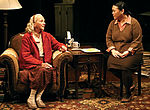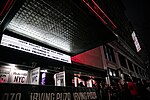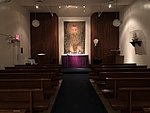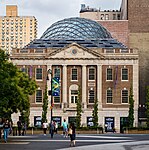Lee Strasberg Theatre and Film Institute

The Lee Strasberg Theatre & Film Institute (originally the Lee Strasberg Theatre Institute) is an acting school founded in 1969 by actor, director, and acting teacher Lee Strasberg. The Institute is located in Union Square on East 15th Street, also known as Lee Strasberg Way, in New York City, New York. The school has a secondary campus located in Los Angeles, California. For more than 40 years, the Institute has held a partnership with New York University's Tisch School of the Arts, where students can earn a Bachelor of Fine Arts degree. The Los Angeles campus also holds an Associate of Occupational Studies degree program. The Institute is under the artistic direction of Anna Strasberg, Lee Strasberg's widow. Students at the Lee Strasberg Theatre & Film Institute learn method acting, an acting technique created and developed by Strasberg.
Excerpt from the Wikipedia article Lee Strasberg Theatre and Film Institute (License: CC BY-SA 3.0, Authors, Images).Lee Strasberg Theatre and Film Institute
East 15th Street, New York Manhattan
Geographical coordinates (GPS) Address Nearby Places Show on map
Geographical coordinates (GPS)
| Latitude | Longitude |
|---|---|
| N 40.735138888889 ° | E -73.98875 ° |
Address
East 15th Street 115
10003 New York, Manhattan
New York, United States
Open on Google Maps








